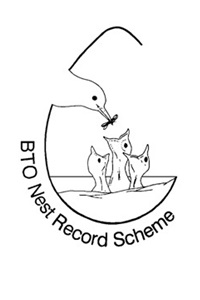The Nest Record Scheme gathers vital information on the breeding success of Britain's birds by following the progress of individual nests.

Time, skill and support
A few minutes on a nest in a garden to a full-time project in the field.
Count eggs and chicks in nests by following the Code of Conduct.
Develop your skills with the NRS Handbook and NRS mentoring.

About the scheme
Every year almost 750 NRS participants monitor over 35,000 nests of different bird species in a variety of habitats. Thanks to the dedication of these volunteers, BTO and other scientists can use the Nest Record Scheme’s unparalleled long-term dataset to assess the impacts that changes in the environment, such as habitat loss and global warming, have on the productivity of wild birds.
Taking part
You can participate, whether it’s by following the progress of a few nests in your local area, erecting and monitoring boxes or becoming a highly skilled nest finder.
NRS Code of Conduct
As with all BTO surveys, the welfare of birds comes first and we expect everyone who participates in the Nest Record Scheme to follow the NRS Code of Conduct, a set of precautions designed to ensure that monitoring a nest does not harm or put it at risk.
BTO Code of Conduct
Volunteers must also follow BTO’s Code of Conduct. This code applies to our staff, our members, and volunteers, including surveyors and participants in the Ringing and Nest Record Schemes, (hereafter referred to collectively as ‘staff and supporters’). It applies to all BTO activities, whether online (including meetings and events, telephone, letter, and email) or offline (any face-to-face interaction). We've also written some guidance for volunteer fieldworkers, which will help beginners in particular.
Want to monitor a small number of nests in your garden?
You might prefer our simple-to-use garden nest recording survey, called Nesting Neighbours.
Project team
Project timeline
- Early Feb Look out for early nesters like Long-tailed Tit
- Late Apr Most residents and migrants now nesting
- Early Sep Still time for late nesters like Goldfinch and Woodpigeon
- End Oct Records needed for early analysis of the season
- End Jan Records needed for full analysis of the season
Contributions and findings
LifeCycle
The biannual magazine of the British & Irish Ringing Scheme and the Nest Record Scheme.

Code of Conduct
An essential set of rules for safe and ethical nest monitoring, to be followed by all NRS volunteers.




Nest boxes
Learn about building, buying and siting boxes for different species.
